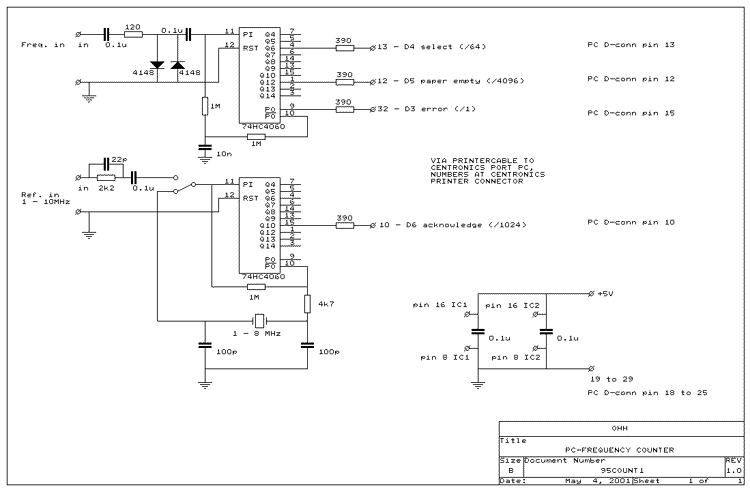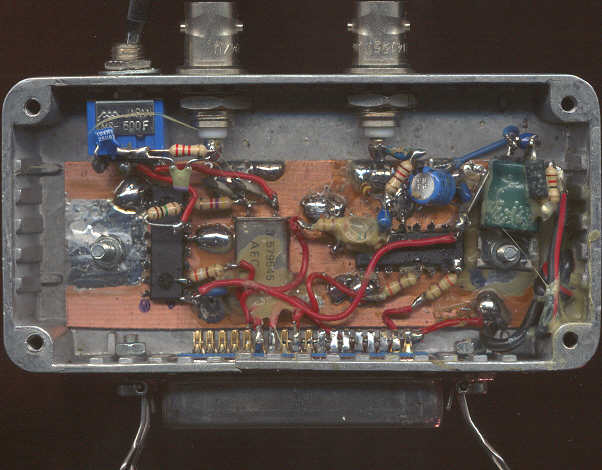
Low budget frequency counter with only two chips.
Connect it to the printer port. It works only in DOS mode, not in Windows!
SIMPLE 80 MHz FREQUENCY
COUNTER FOR PC (DOS)
(1995)

Low budget frequency counter with only two chips.
Connect it to the printer port. It works only in DOS mode, not in Windows!

Circuit diagram
big diagram
Running the program
Connect the counter to LPT1 via a Centronics printer cable.
For accurate results, your PC should run in DOS mode, not in Windows. Start the program by
typing FREQPC.EXE REFERENCE_FREQUENCY. In my case FREQPC.EXE 3578880, as the exact frequency
of the crystal oscillator of my counter is 3578880 Hz. When I use my 10 MHz reference standard,
the command is FREQPC.EXE 10000000 or FREQPC.EXE 1e7.
No time out
For maximum accuracy, there is no timeout during the measurement. Therefore it is possible that
the program halts if the input signal is removed. So the procedure is: Stop the program and
then remove the input signal. Before the measurement begins, the program checks if there is an input
signal. Although the circuit could get it's supply from the printer port, I use a separate 5 V
supply for better performance.
Download the program(s)
Performance
| Frequency (MHz) | Sensitivity (mV RMS) |
|
0.1 1 10 30 50 80 100 120 |
10 3 10 30 100 150 200 500 |
| Accuracy: | 1e-6 |

Inside view

The PC program, here opened in Windows, but use it only with DOS for accurate results!
Use the up-down cursor keys to select, right cursor key to activate a menu choice and left cursor key to return.